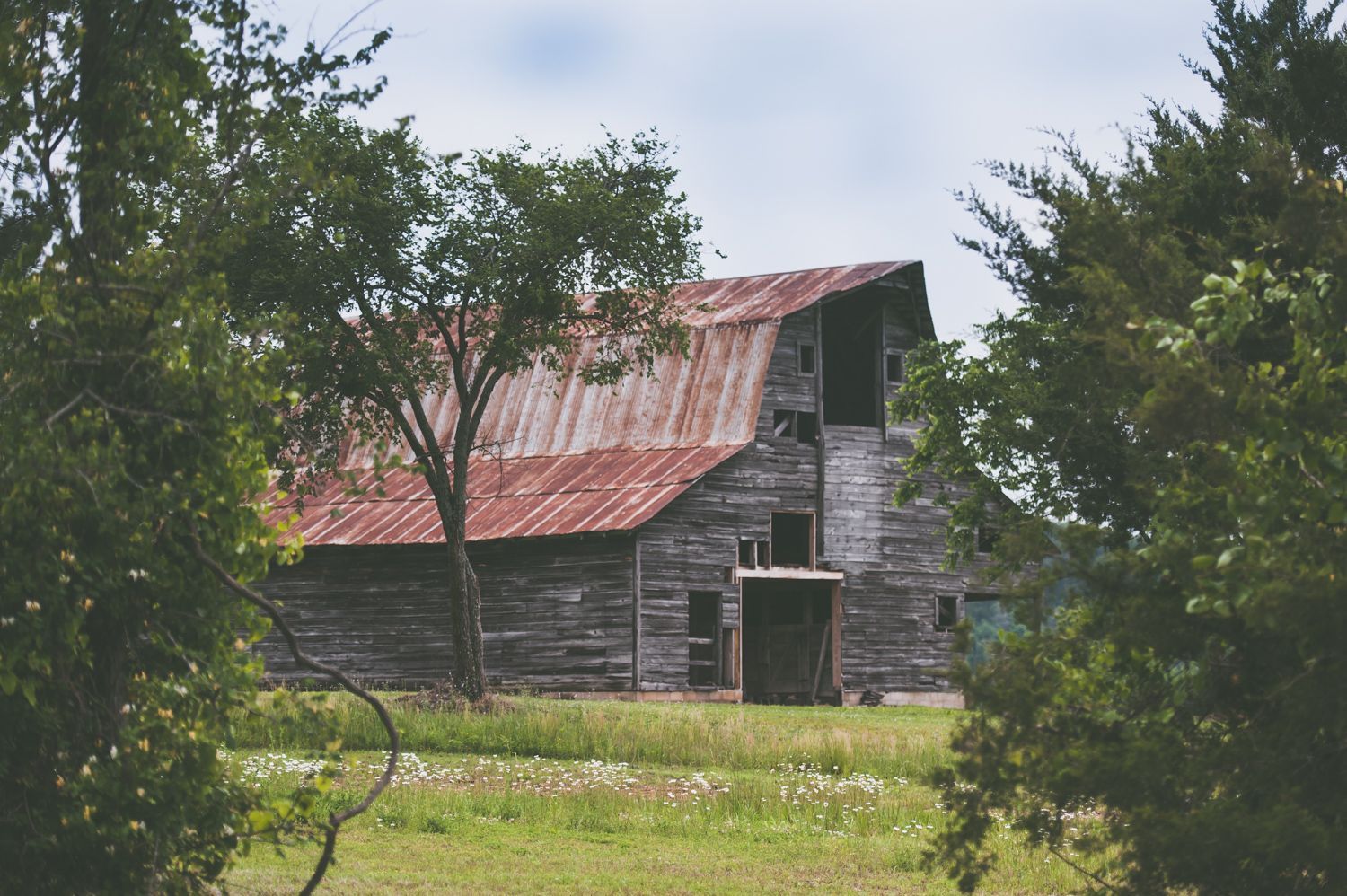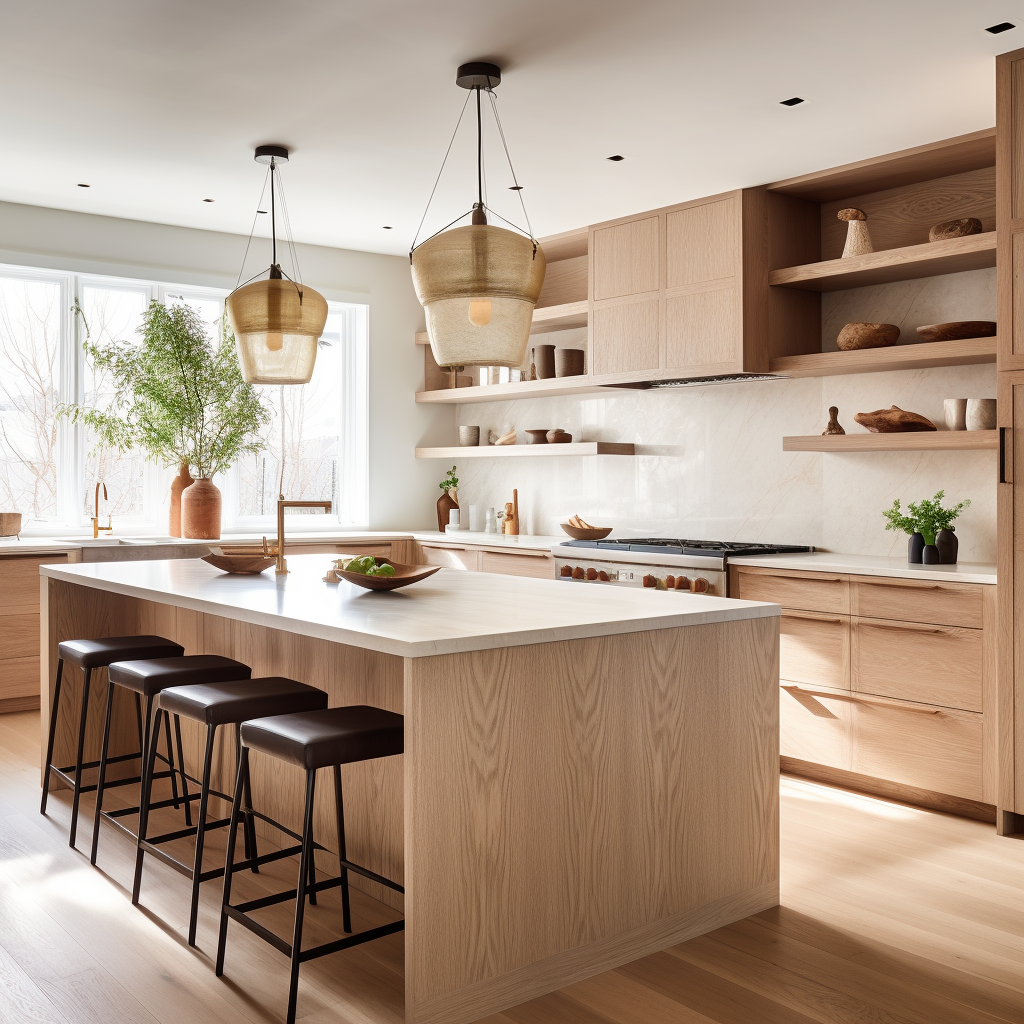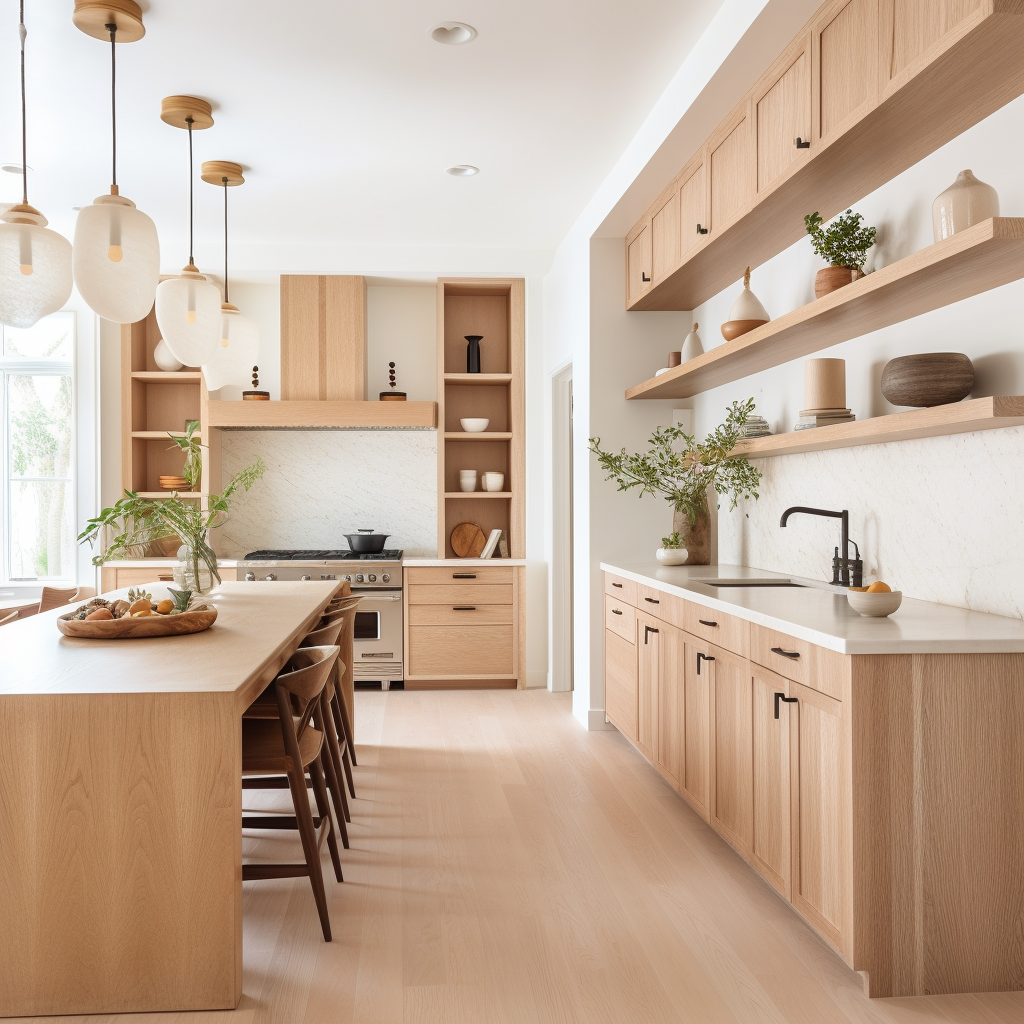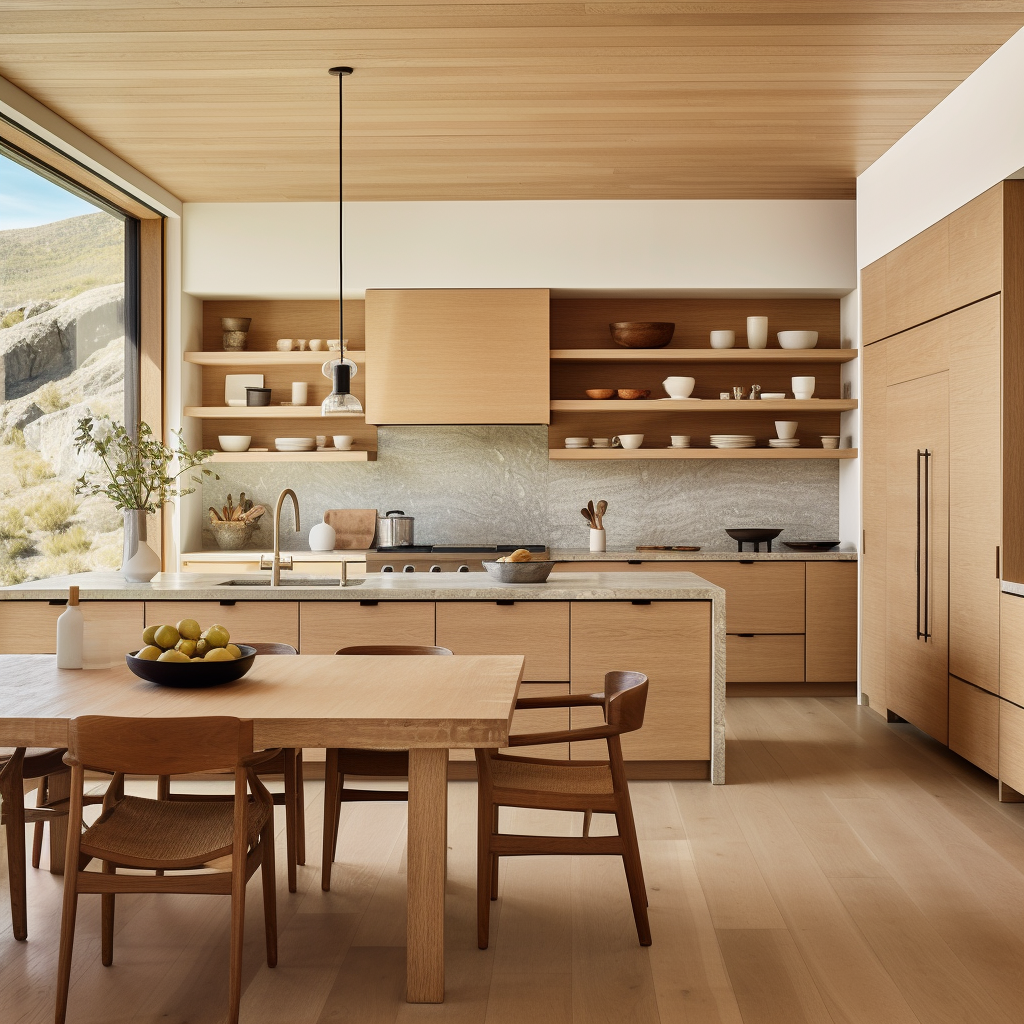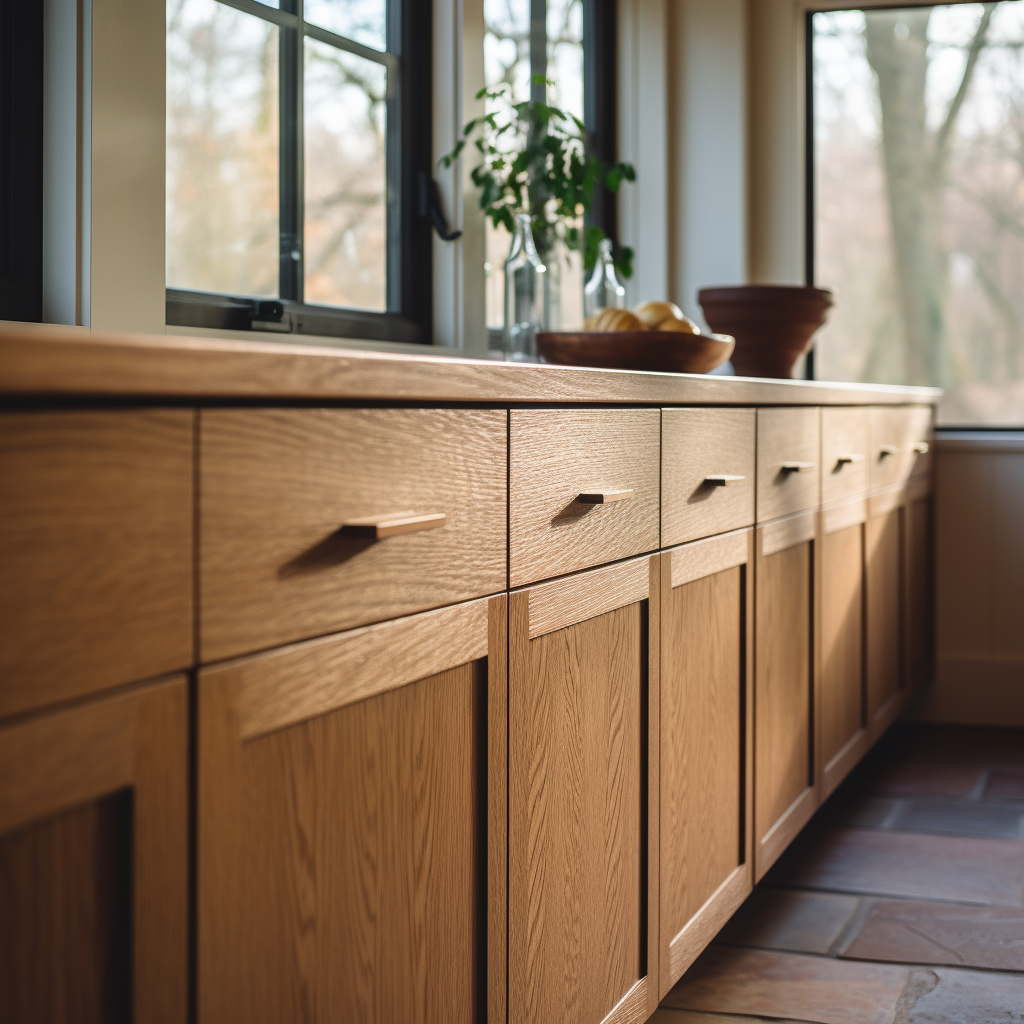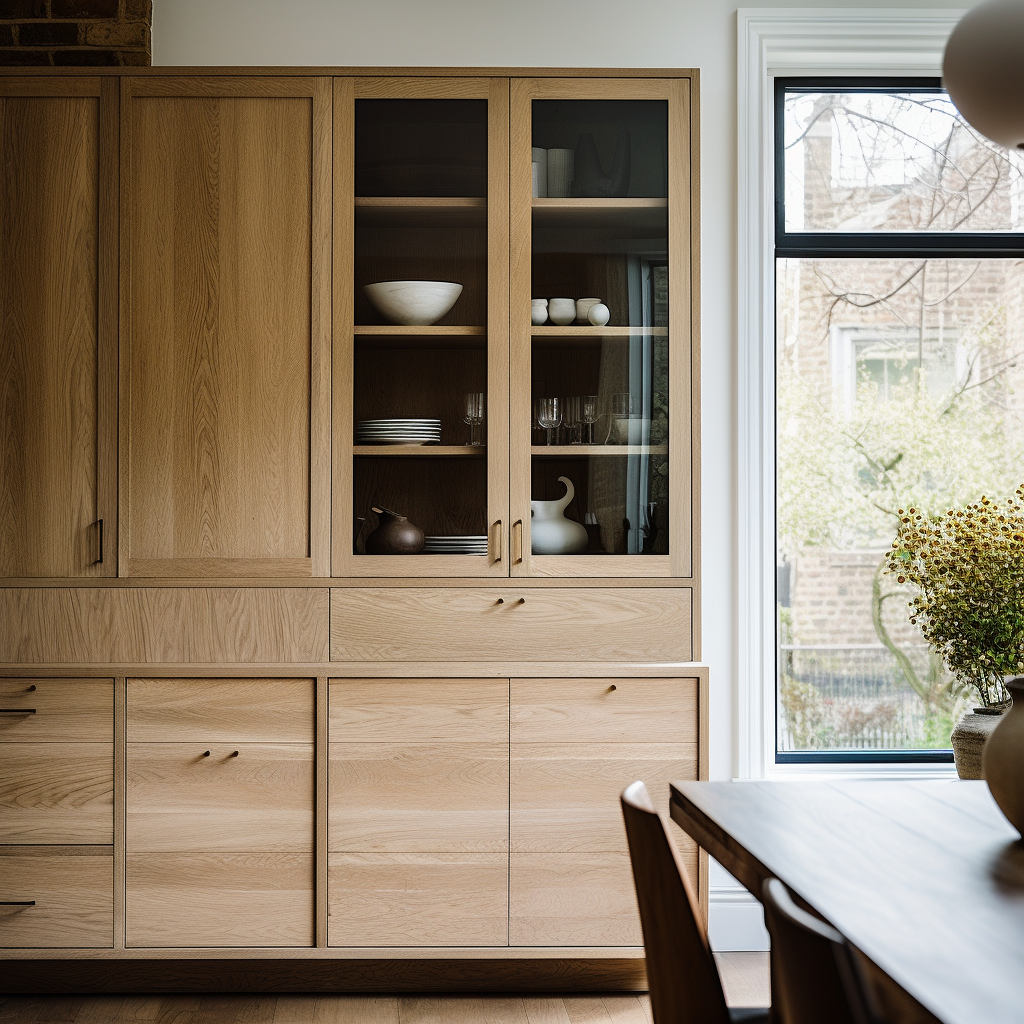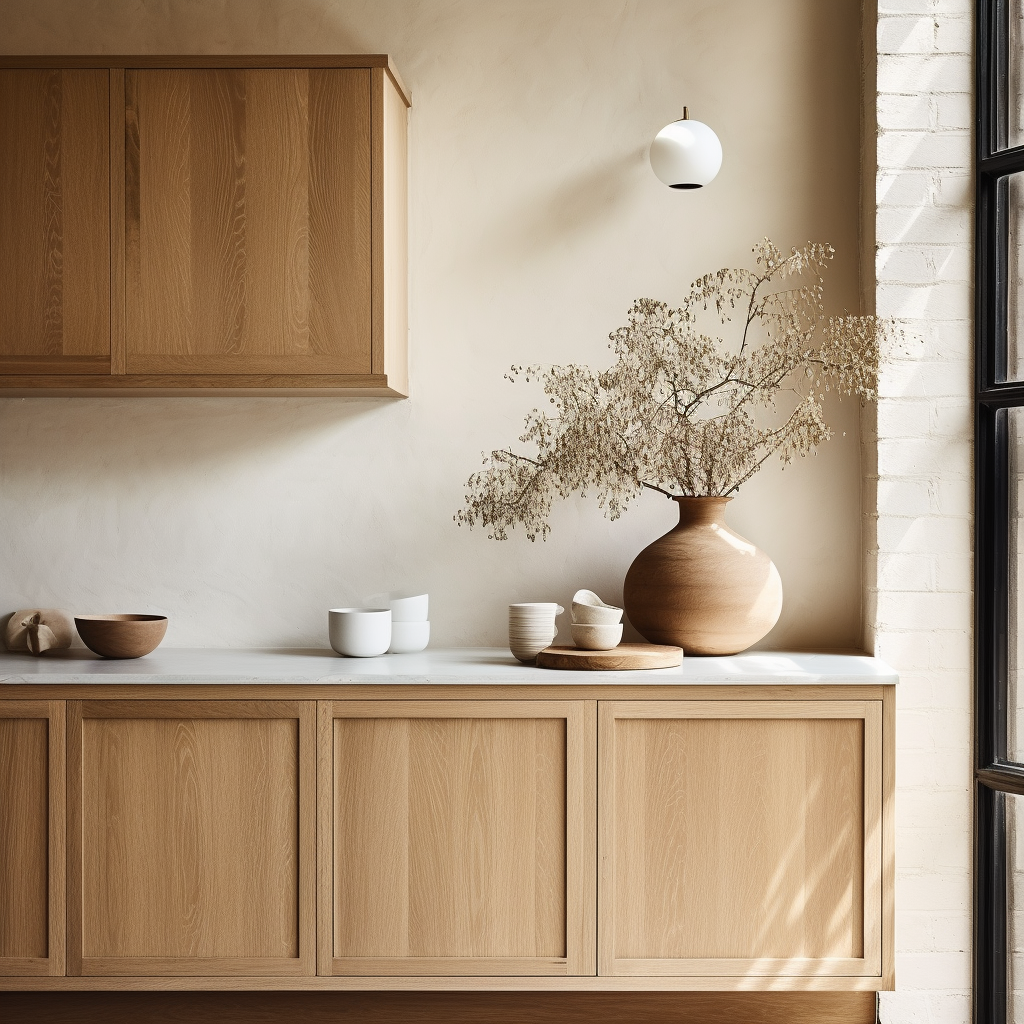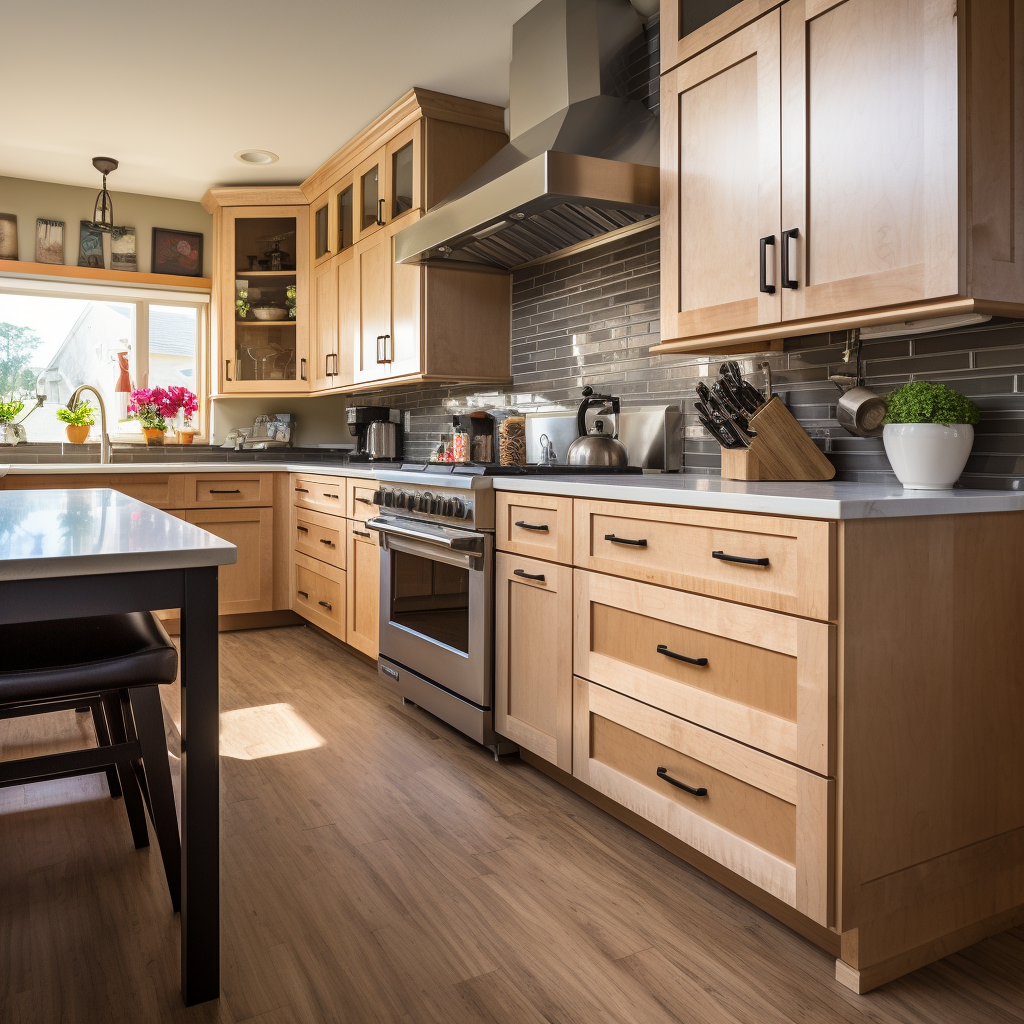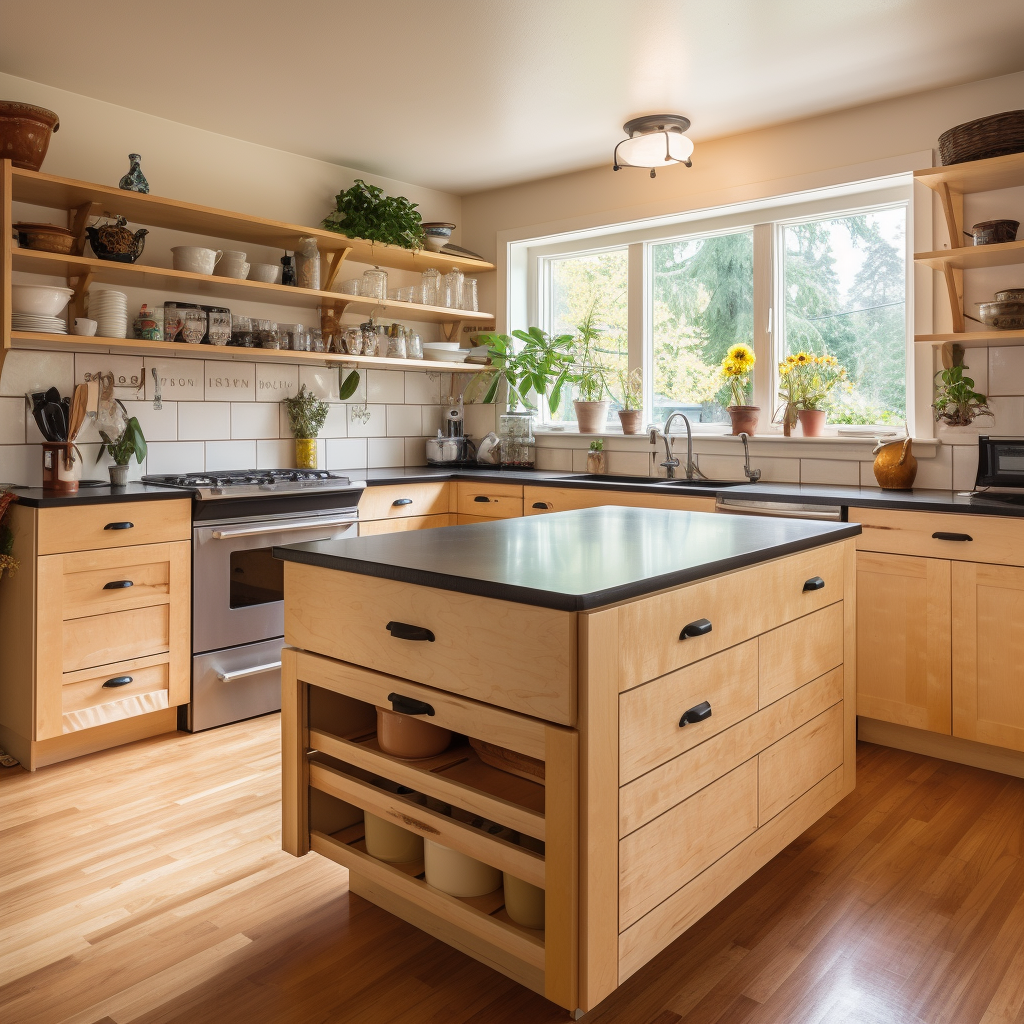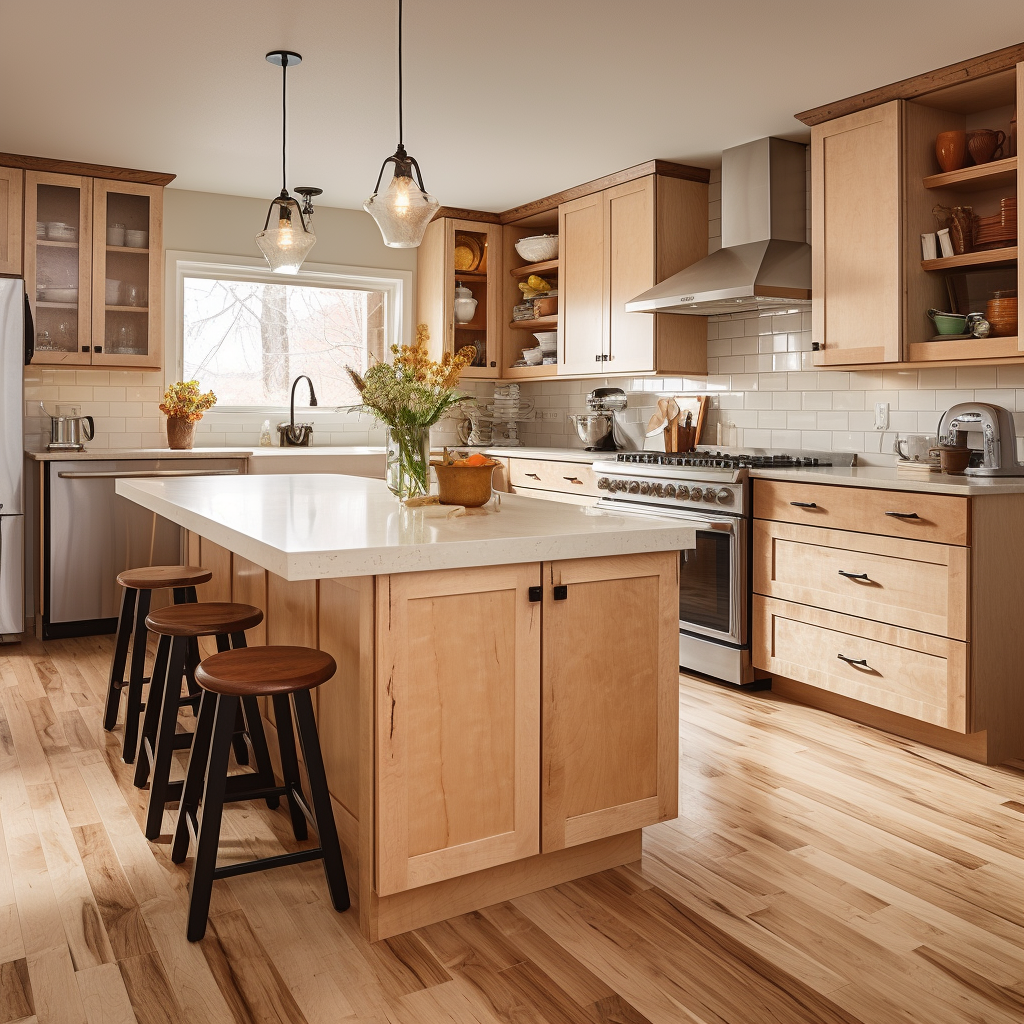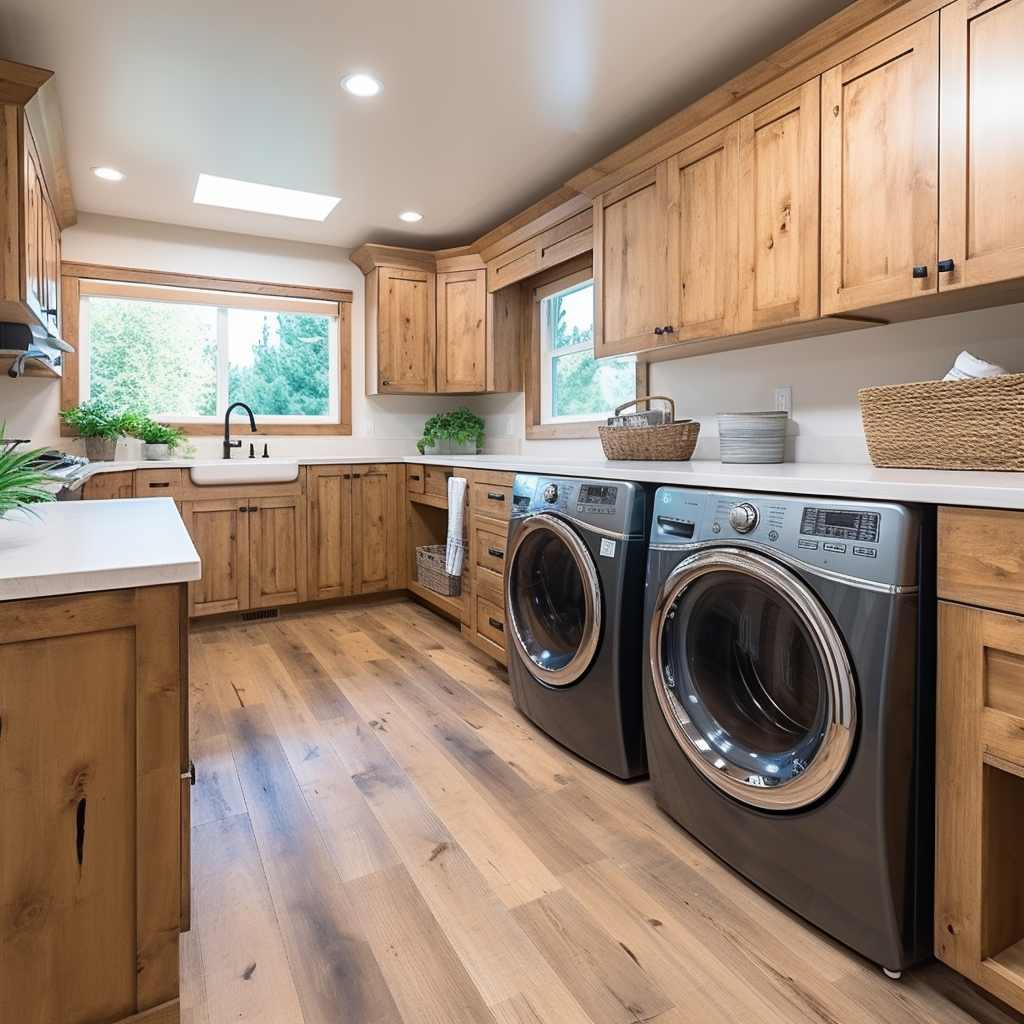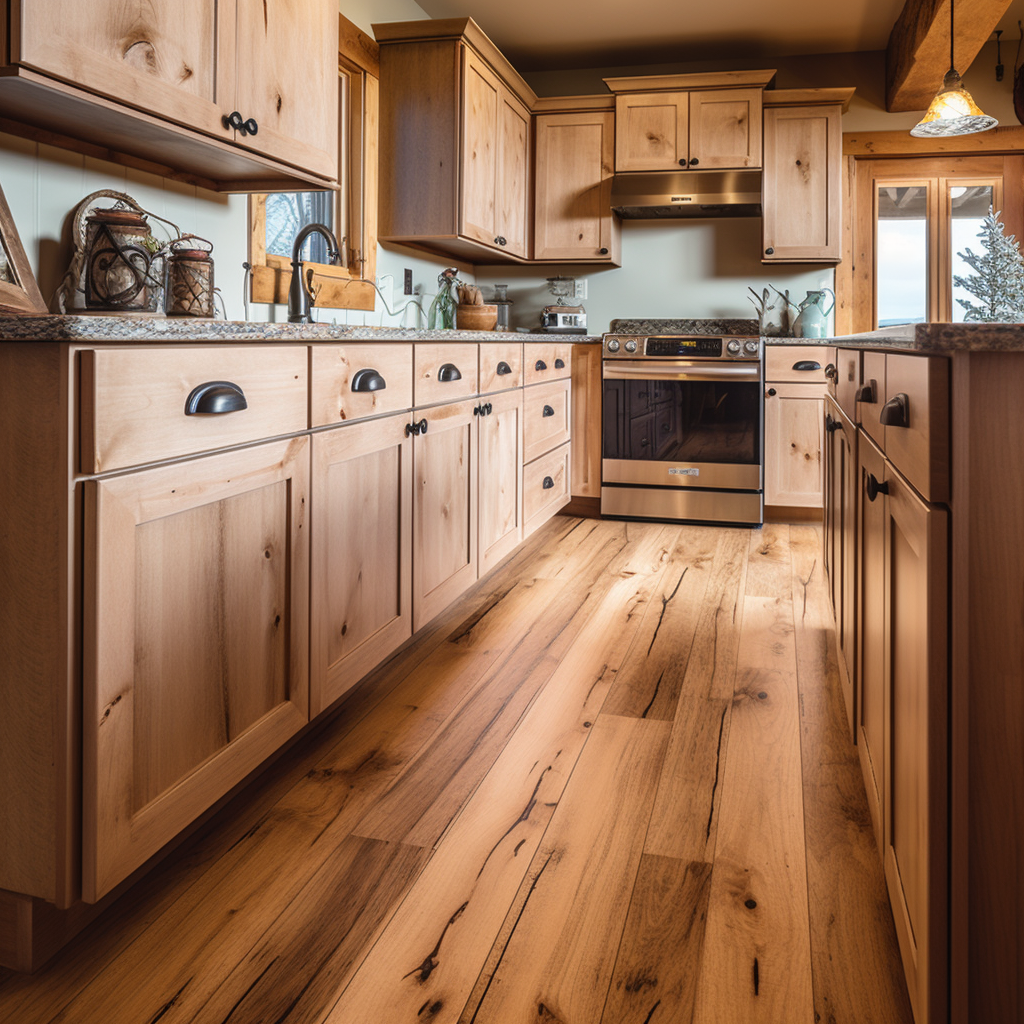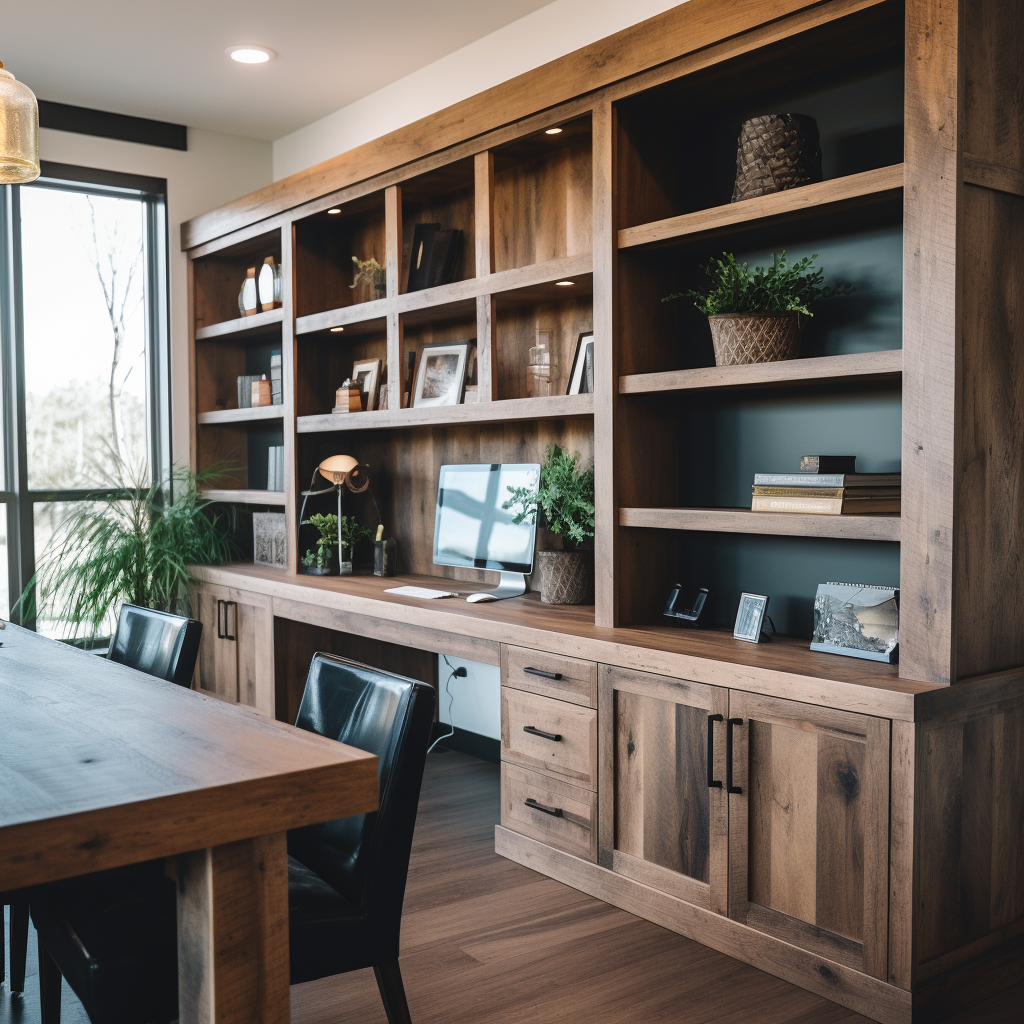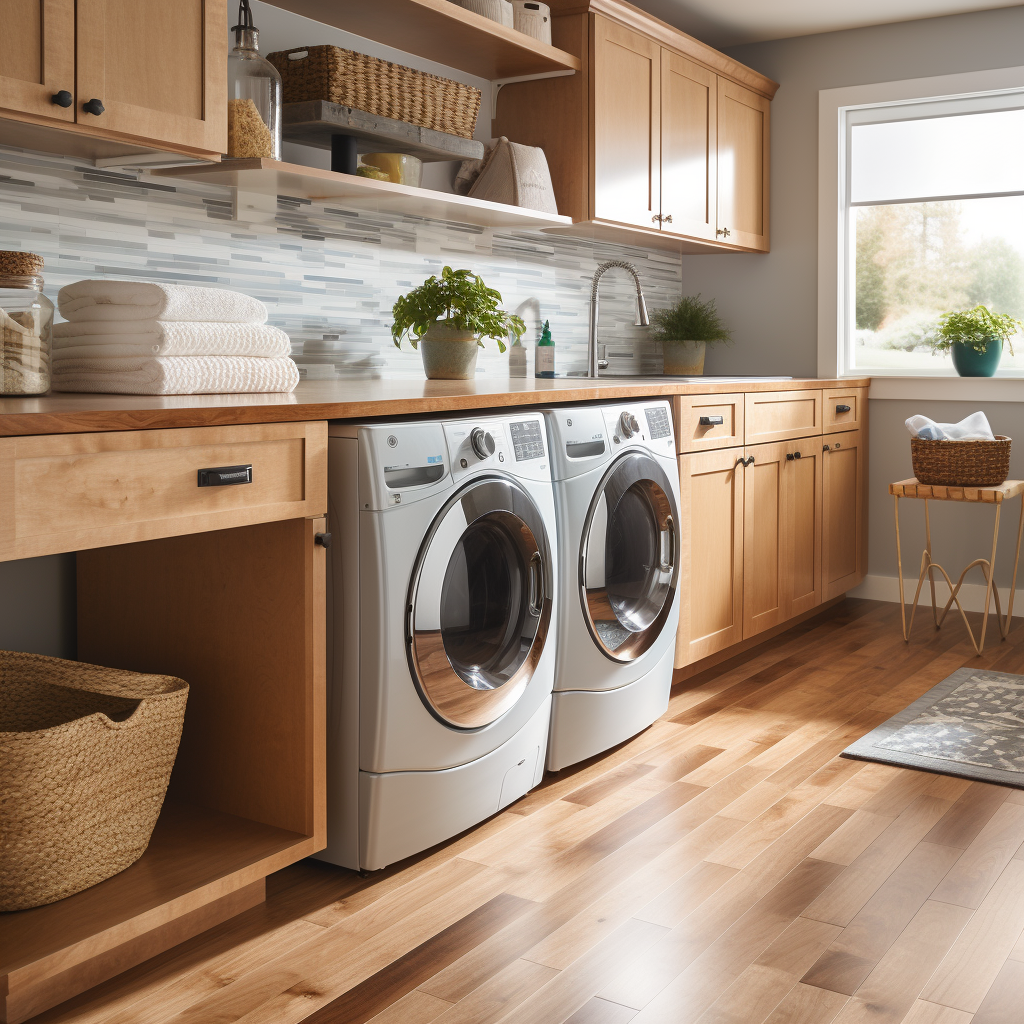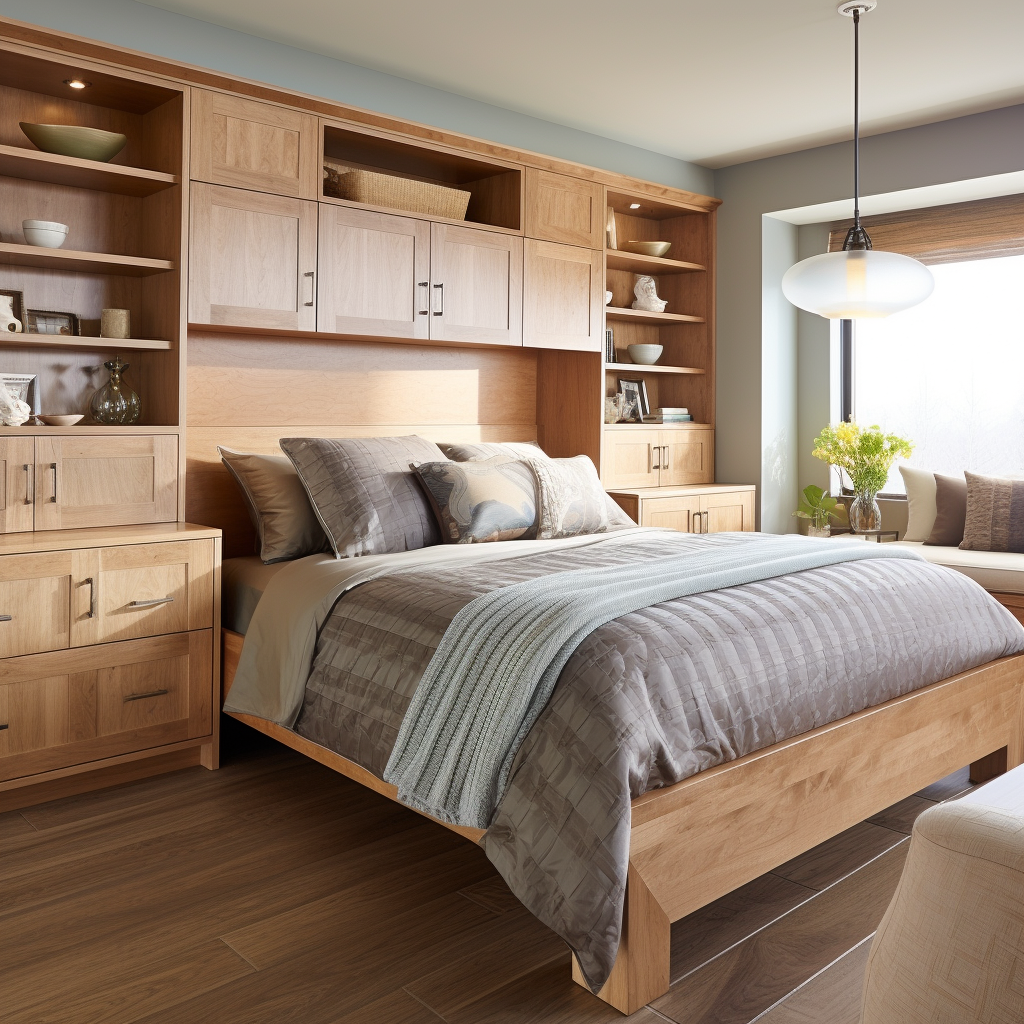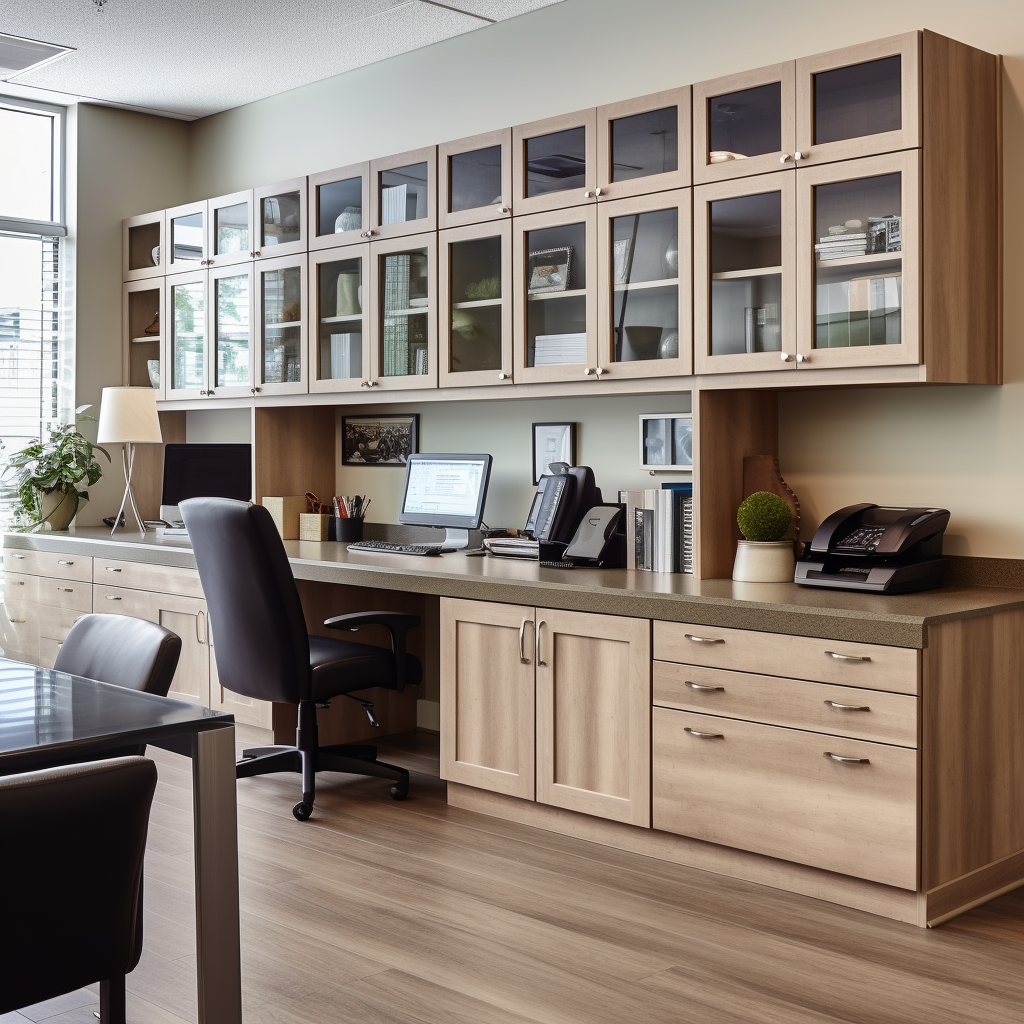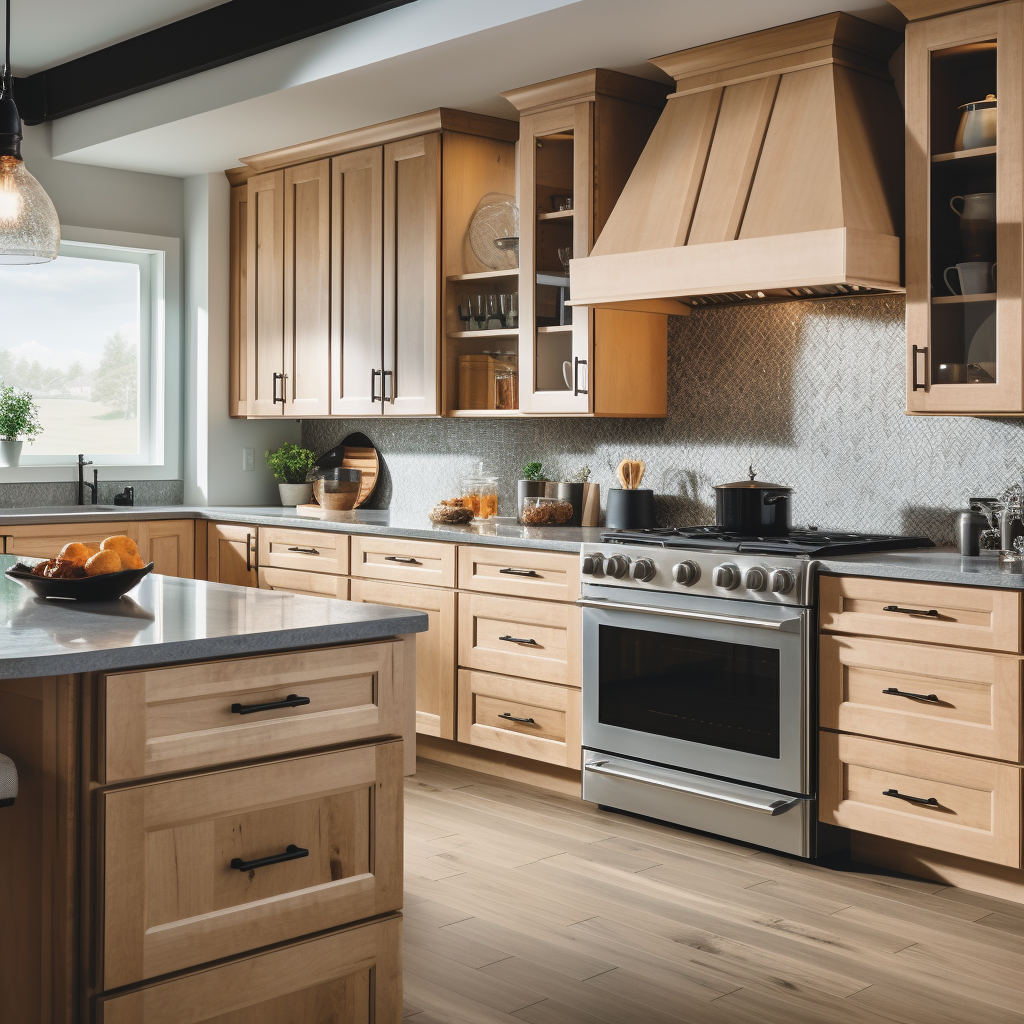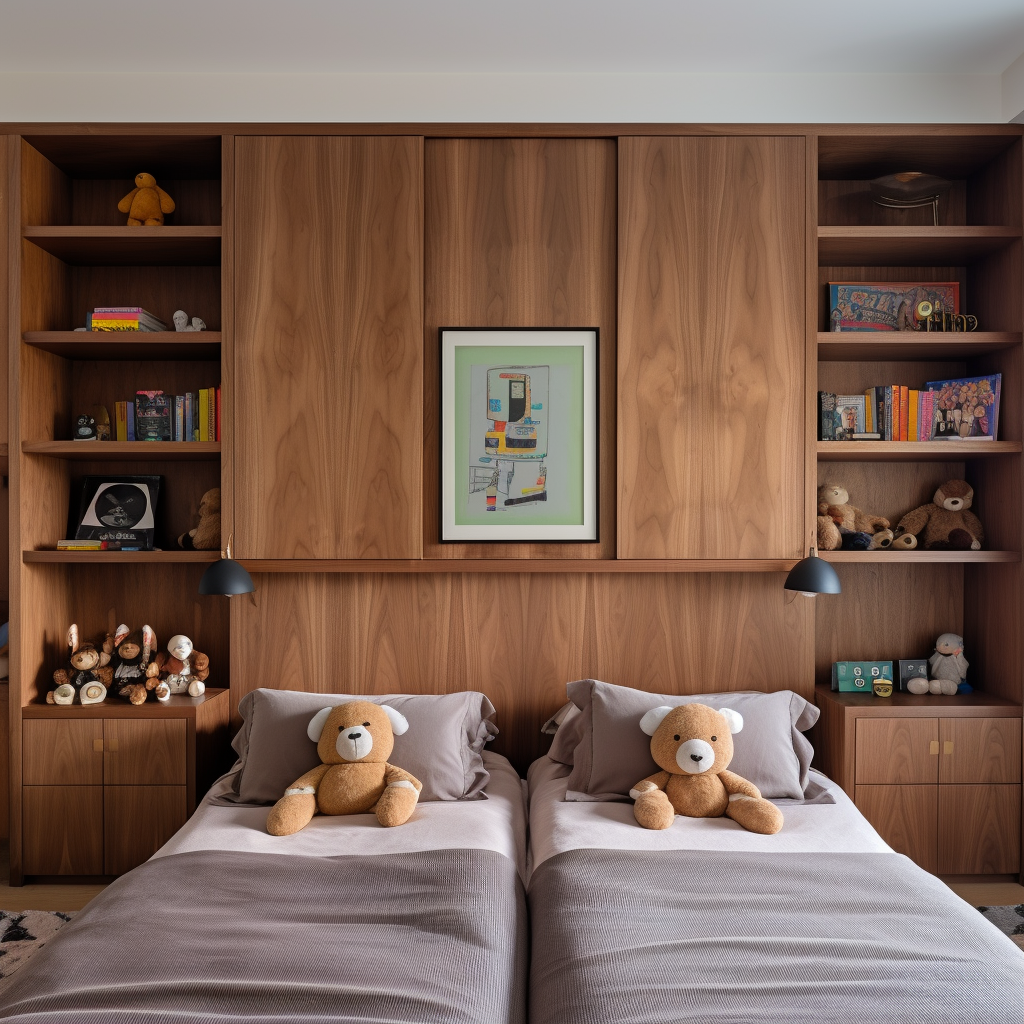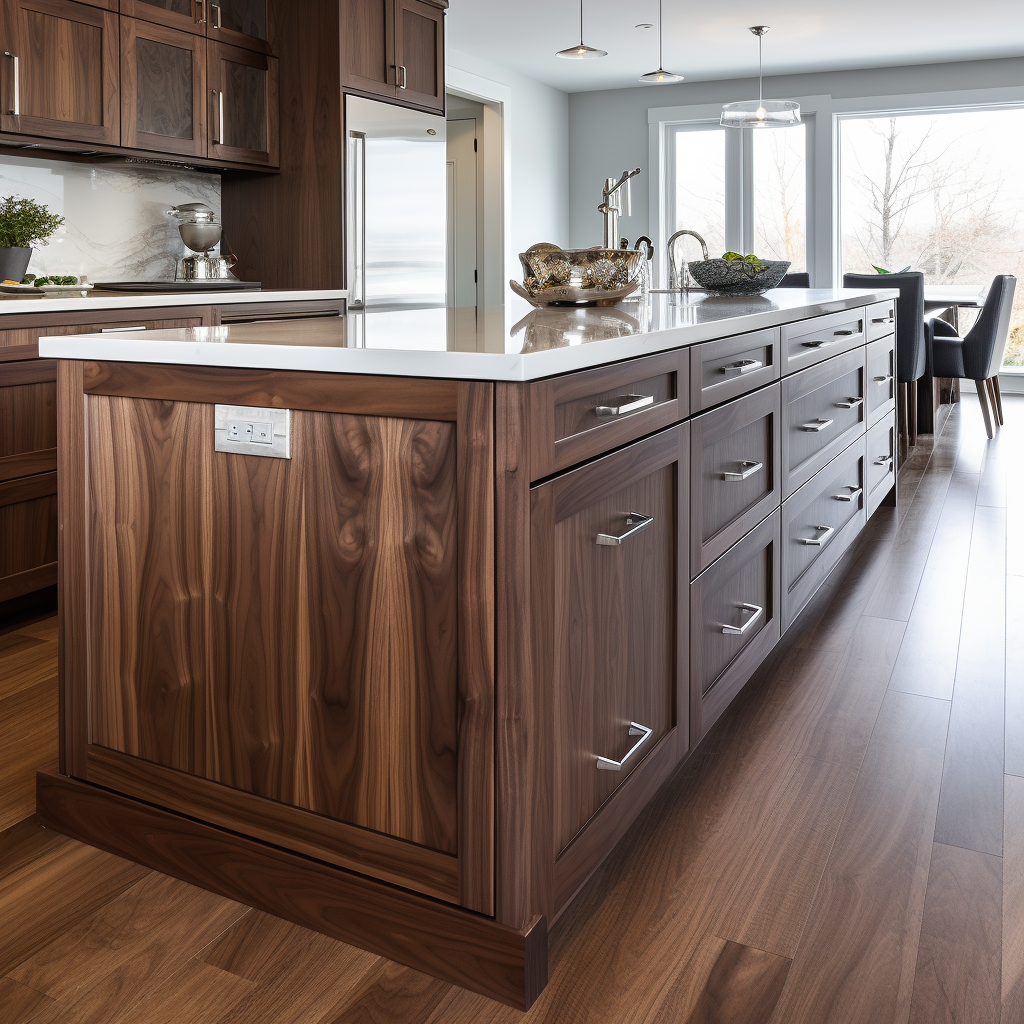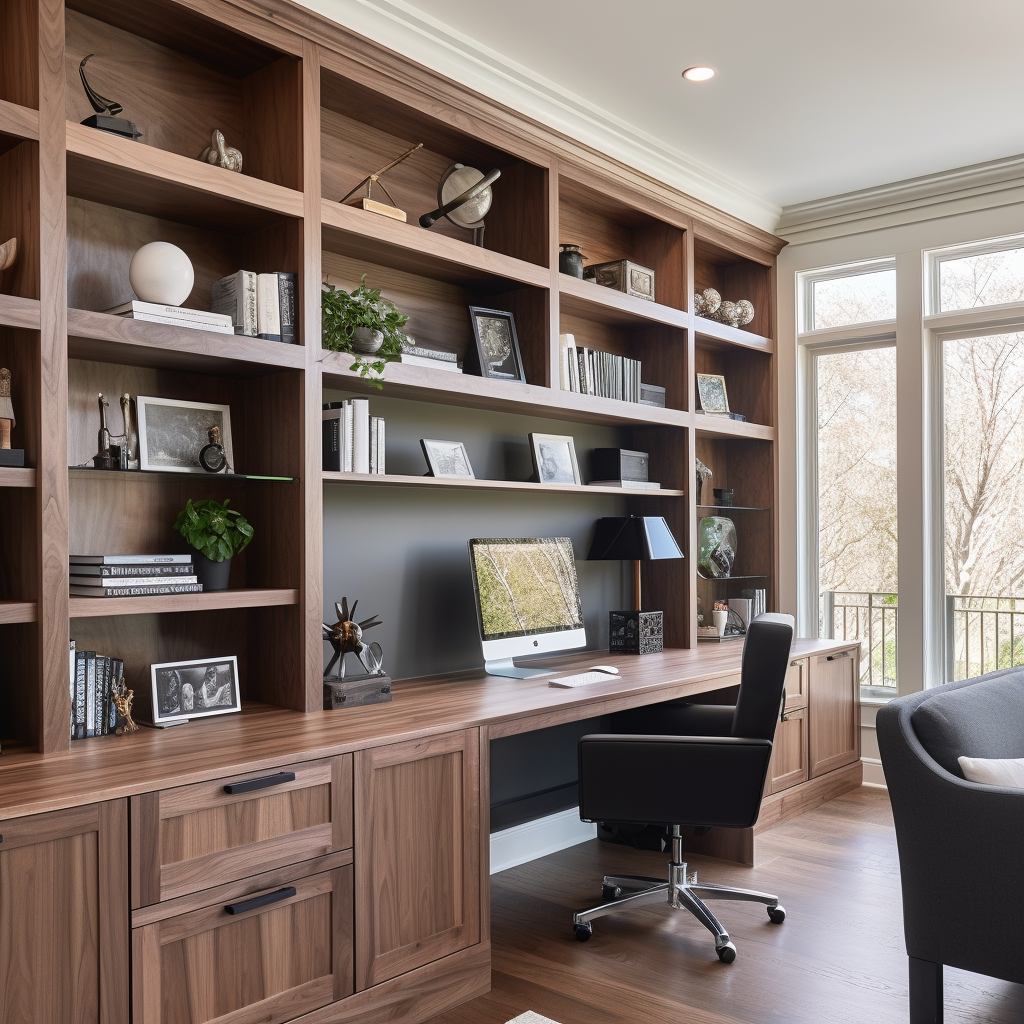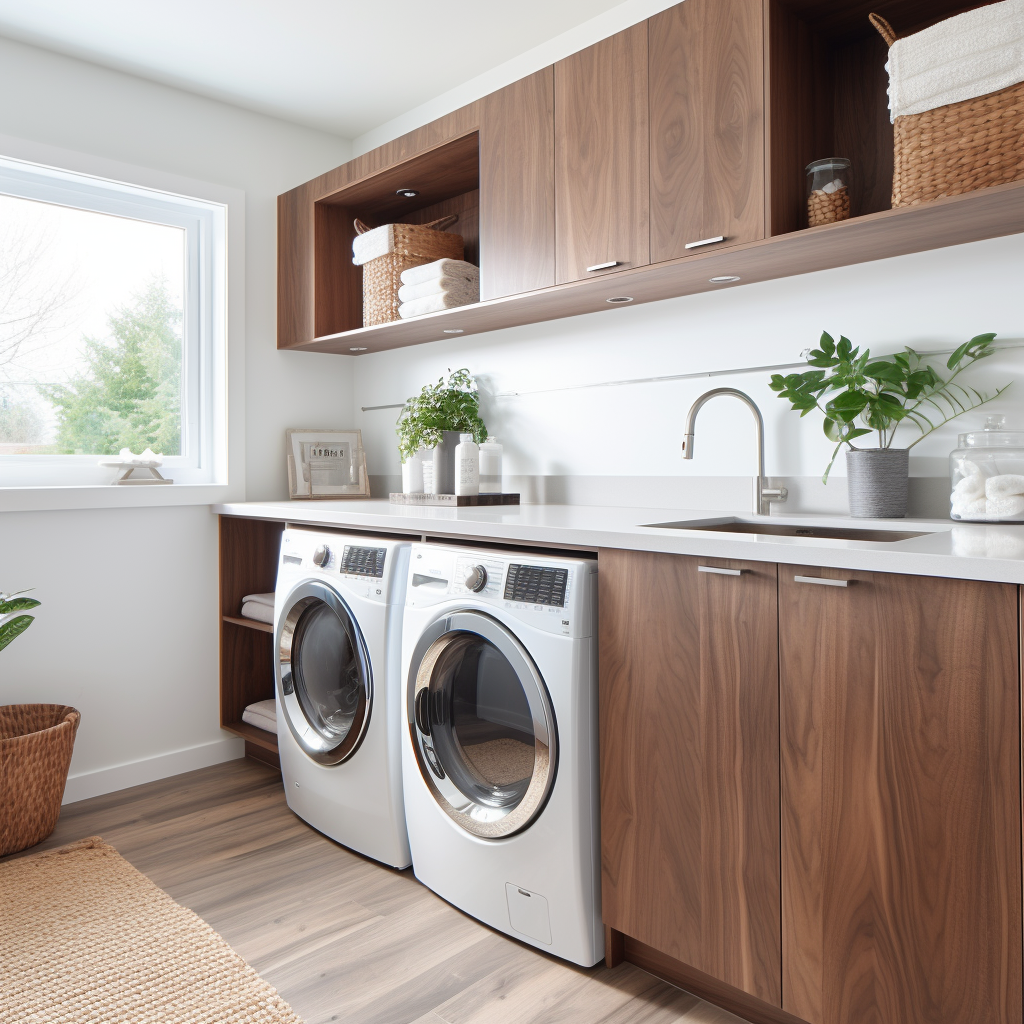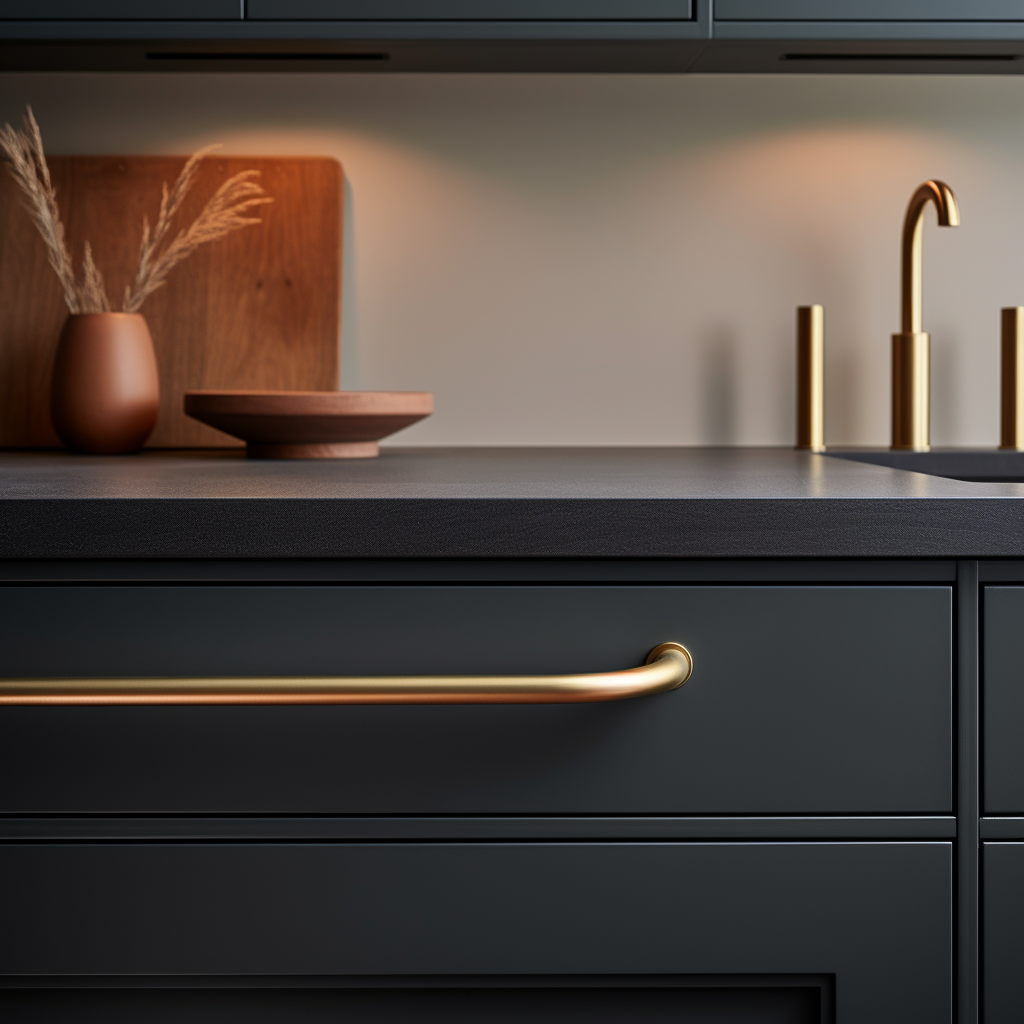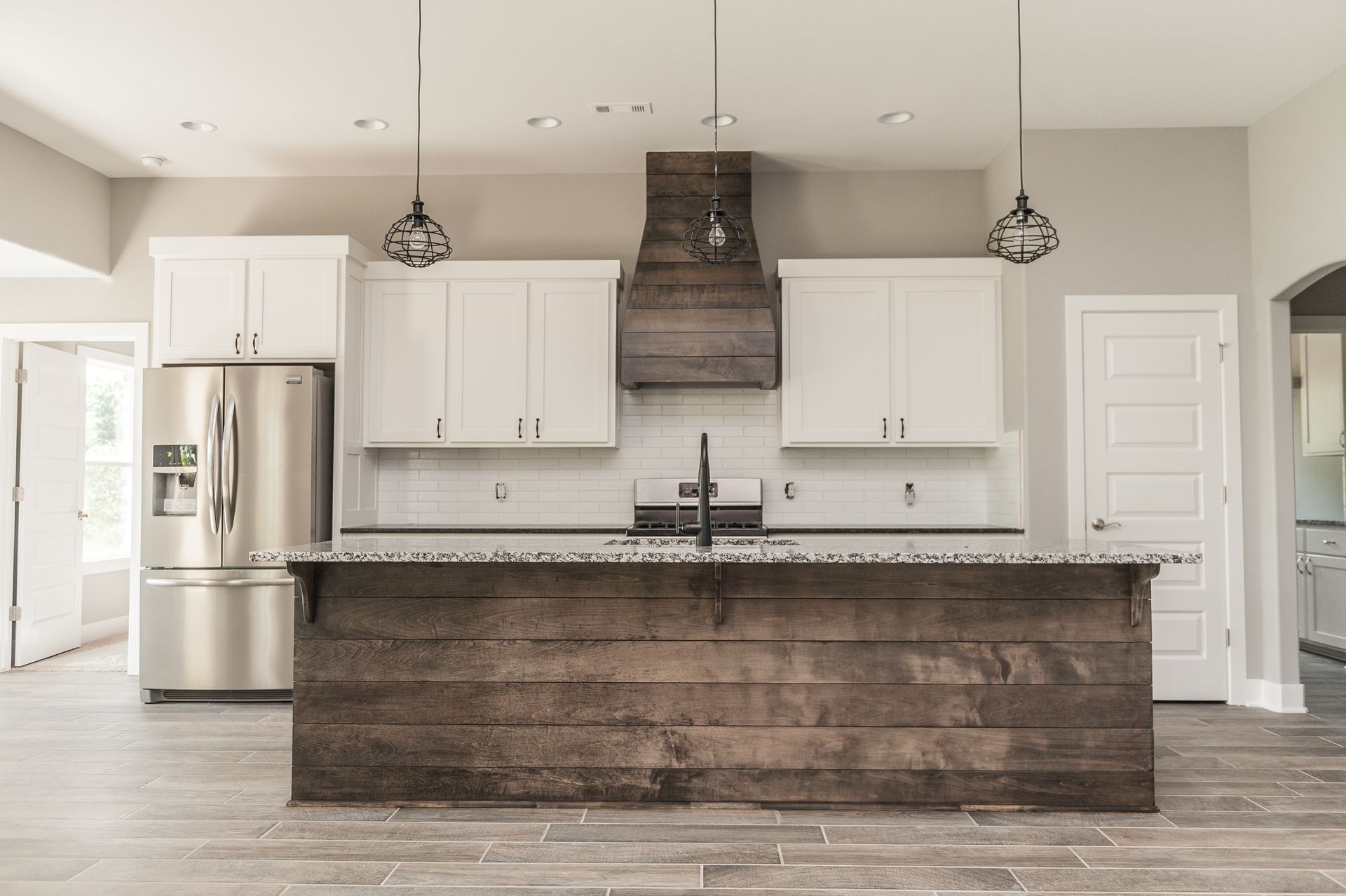Unveiling the Artistry of Custom Cabinet Wood Selection
Selecting the right wood species is a pivotal step in creating custom cabinets
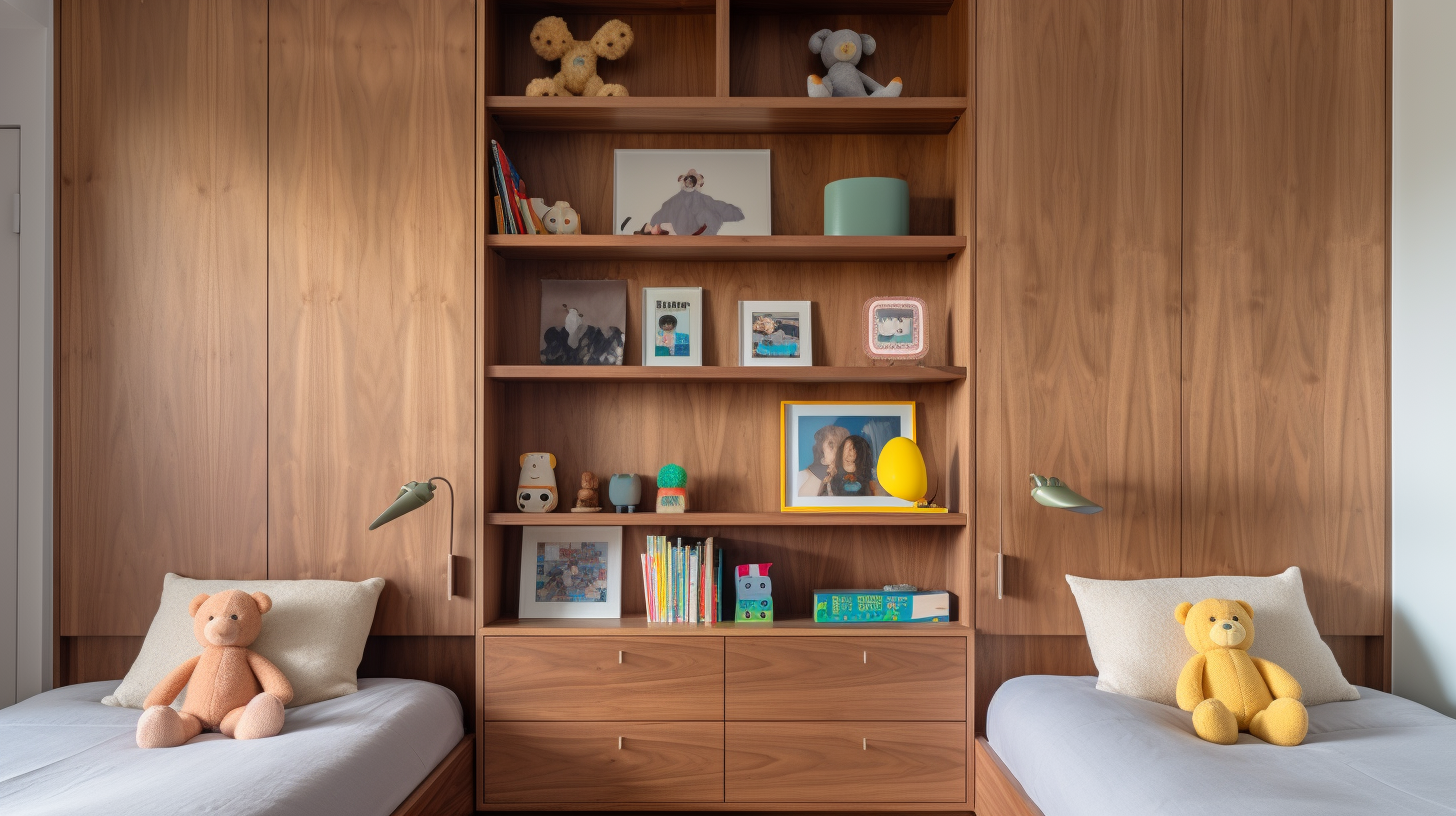
At Shilo Cabinets and Interiors, we take tremendous pride in crafting custom cabinets that not only elevate spaces but also stand the test of time. A crucial aspect of achieving this quality lies in the selection of premium wood species. Each type brings its own unique character, ensuring a tailored approach to every project. We also understand that choosing the right wood isn't just about aesthetics, but also about functionality. The location of the cabinets within your home plays a vital role in determining the ideal wood type. For instance, a durable wood like white oak might be the perfect choice for kitchen cabinets, while the warm character of knotty alder could create inviting spaces in a living room or den. Here we will explore the wood species we most commonly use in our custom projects as well as discuss the pros and cons of each type.
Riff Cut White Oak:
Riff cut white oak is the epitome of understated elegance. Its rift-sawn grain pattern, a result of precise milling, provides a linear, clean look that exudes sophistication. Beyond aesthetics, this wood species boasts exceptional durability, making it an ideal choice for high-traffic areas like kitchens. It's a popular choice for clients seeking a balance between contemporary and classic styles.
Pros: Riff cut white oak stands out for its remarkable durability, ensuring cabinets that can withstand the demands of daily use for generations. Its distinctive grain pattern adds a touch of elegance to any space, making it a popular choice for both traditional and contemporary designs. Additionally, white oak is known for its excellent staining properties, allowing for a wide range of finishes to achieve the desired aesthetic.
Cons: While rift cut white oak is highly durable, it is a denser wood, which can make it slightly more challenging to work with during the crafting process. Additionally, due to its density, it may require specialized tools for certain detailing work.
White Oak:
White oak, a staple in American woodworking, offers a versatile canvas for crafting timeless cabinets. Its inherent strength, coupled with a tight grain pattern, ensures longevity and resilience. One of the remarkable qualities of white oak is its adaptability to various finishing techniques. From natural finishes that celebrate its warm, golden undertones to darker stains that infuse a sense of depth, white oak provides endless design possibilities.
Pros: White oak's strength and resilience make it an excellent choice for high-traffic areas. Its fine grain pattern provides a consistent appearance that complements a wide range of design styles. The versatility of white oak extends to its ability to take stains and finishes exceptionally well, giving clients the freedom to achieve their desired look.
Cons: One consideration with white oak is its natural tannins, which can react with certain finishes over time. Proper sealing and finishing techniques are essential to ensure the wood maintains its original color and integrity.
Maple:
Maple's smooth grain and consistent appearance make it a favored choice for those seeking a clean, modern aesthetic. This wood species lends itself beautifully to paint and stain, allowing for a wide spectrum of finishes. Its light hue can be accentuated with darker stains or left natural for a minimalist, Scandinavian-inspired look. Beyond its visual appeal, maple's durability ensures cabinets that withstand the rigors of daily use.
Pros: Maple's smooth, fine grain and consistent appearance make it a canvas for clean, contemporary designs. It is an excellent choice for painted finishes, allowing for a flawless, uniform look. Additionally, maple is relatively easy to work with during the crafting process, providing flexibility in design and detailing.
Cons: While maple is durable, it is considered a softer hardwood compared to some other species, which means it may be more susceptible to dents and scratches over time. Proper care and maintenance are crucial to ensure longevity.
Knotty Alder:
Knotty alder brings a touch of rustic charm to any space. Its distinctive knots and grain patterns add character and warmth, making it a popular choice for creating cozy, inviting environments. Knotty alder cabinets excel in designs that embrace natural elements, from farmhouse kitchens to mountain retreats. The wood's unique imperfections become design assets, adding a layer of authenticity to the final product.
Pros: Knotty alder's rustic charm and distinctive knots add a unique character to cabinets, making them ideal for creating warm, inviting spaces. The wood is relatively lightweight, making it easier to handle during the crafting process. Its natural imperfections become design assets, contributing to a cozy, lived-in aesthetic.
Cons: Knotty alder's softer nature means it may be more susceptible to dents and dings over time. While this adds to its rustic character, it's important to consider this aspect when placing cabinets in high-traffic areas.
Clear Alder:
Clear alder offers a refined alternative to its knotty counterpart. With a smoother appearance and fewer knots, it lends itself beautifully to modern and transitional designs. Clear alder's uniform texture and warm undertones make it a versatile choice for various interior styles. Whether used for sleek, minimalist cabinets or intricate, detailed designs, clear alder adapts with grace and elegance.
Pros: Clear alder offers a clean, refined look with fewer knots and a smoother grain pattern. This makes it an excellent choice for contemporary and transitional designs. Its uniform texture allows for a sleek, sophisticated finish, providing a versatile canvas for various interior styles.
Cons: While clear alder is durable, it may not be as resistant to wear and tear as some harder hardwoods. It's important to take proper care to maintain its original appearance.
Walnut:
Walnut is synonymous with luxury and opulence. Its deep, rich tones add an air of sophistication to any space. Beyond its visual appeal, walnut is incredibly durable and can stand up to years of use. Its natural beauty shines through, creating cabinets that are true works of art.
Pros: Walnut is synonymous with luxury and opulence. Its deep, rich tones add an air of sophistication to any space. Beyond its visual appeal, walnut is incredibly durable and can stand up to years of use. Its natural beauty shines through, creating cabinets that are true works of art.
Cons: One consideration with walnut is its relative rarity and higher cost compared to other wood species. Additionally, it requires regular maintenance to preserve its sheen and color. Proper sealing and finishing are crucial to protect this investment.
Selecting the right wood species is a pivotal step in creating custom cabinets that resonate with your personal style and functional needs. From the refined elegance of rift-cut white oak to the rustic allure of knotty alder, each wood brings its own distinct character to the table. We invite you to explore these options with us and embark on a journey to craft cabinets that truly define your space.
Ready to discover the perfect wood for your custom cabinets? Contact us today for a consultation and explore a portfolio of projects showcasing these exquisite wood species in action.
